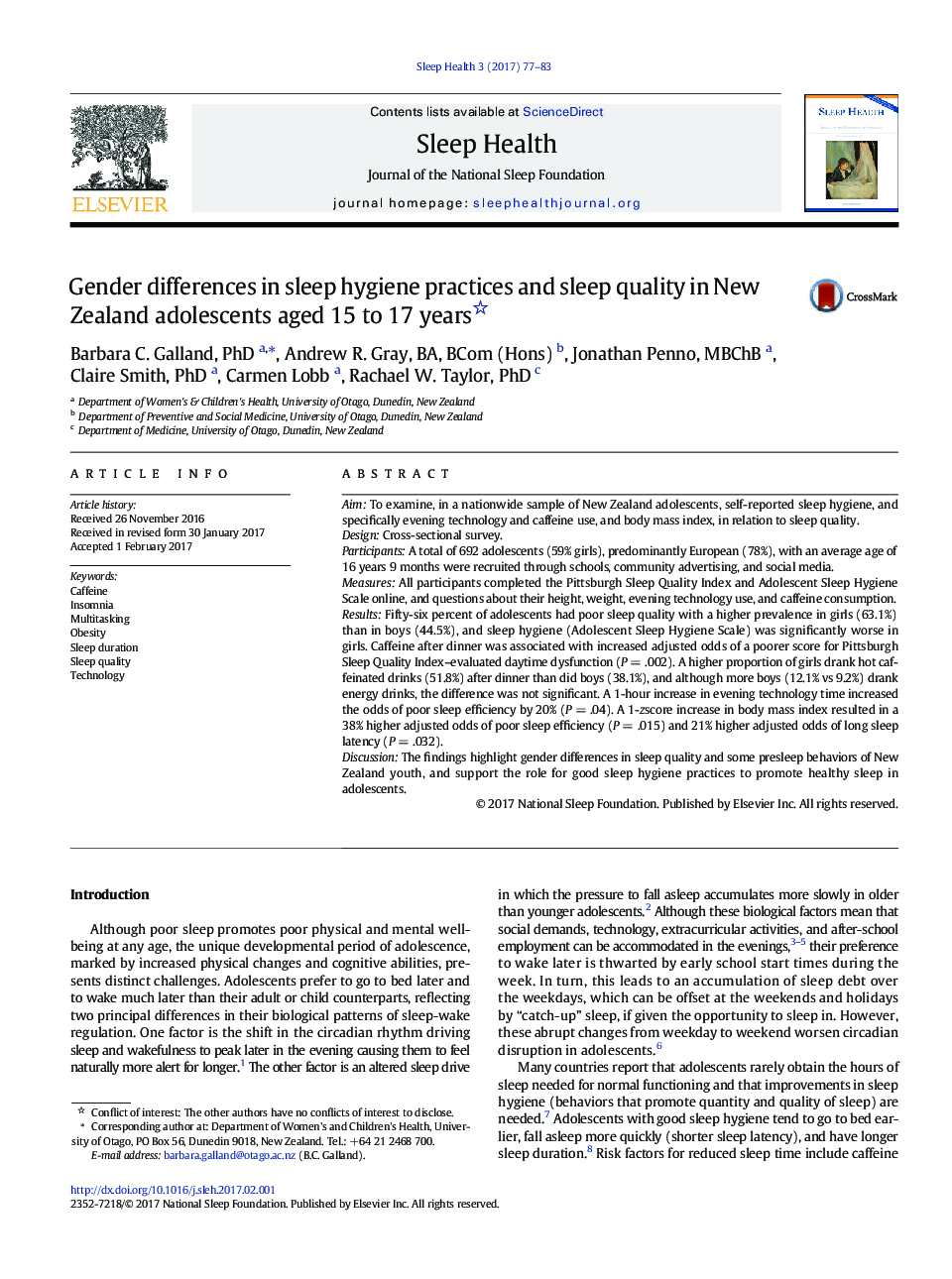| Article ID | Journal | Published Year | Pages | File Type |
|---|---|---|---|---|
| 5039511 | Sleep Health | 2017 | 7 Pages |
AimTo examine, in a nationwide sample of New Zealand adolescents, self-reported sleep hygiene, and specifically evening technology and caffeine use, and body mass index, in relation to sleep quality.DesignCross-sectional survey.ParticipantsA total of 692 adolescents (59% girls), predominantly European (78%), with an average age of 16 years 9 months were recruited through schools, community advertising, and social media.MeasuresAll participants completed the Pittsburgh Sleep Quality Index and Adolescent Sleep Hygiene Scale online, and questions about their height, weight, evening technology use, and caffeine consumption.ResultsFifty-six percent of adolescents had poor sleep quality with a higher prevalence in girls (63.1%) than in boys (44.5%), and sleep hygiene (Adolescent Sleep Hygiene Scale) was significantly worse in girls. Caffeine after dinner was associated with increased adjusted odds of a poorer score for Pittsburgh Sleep Quality Index-evaluated daytime dysfunction (PÂ =Â .002). A higher proportion of girls drank hot caffeinated drinks (51.8%) after dinner than did boys (38.1%), and although more boys (12.1% vs 9.2%) drank energy drinks, the difference was not significant. A 1-hour increase in evening technology time increased the odds of poor sleep efficiency by 20% (PÂ =Â .04). A 1-zscore increase in body mass index resulted in a 38% higher adjusted odds of poor sleep efficiency (PÂ =Â .015) and 21% higher adjusted odds of long sleep latency (PÂ =Â .032).DiscussionThe findings highlight gender differences in sleep quality and some presleep behaviors of New Zealand youth, and support the role for good sleep hygiene practices to promote healthy sleep in adolescents.
